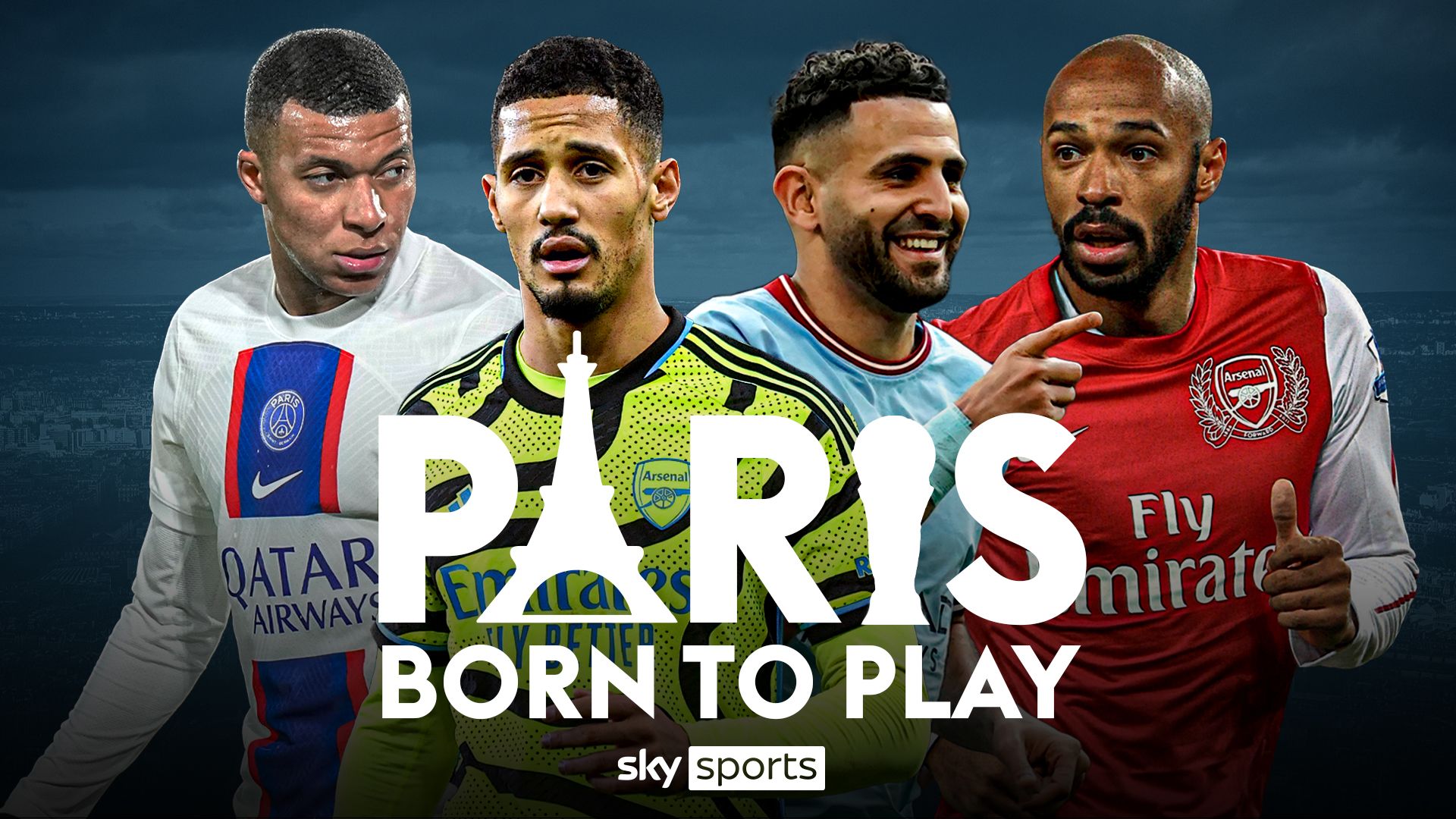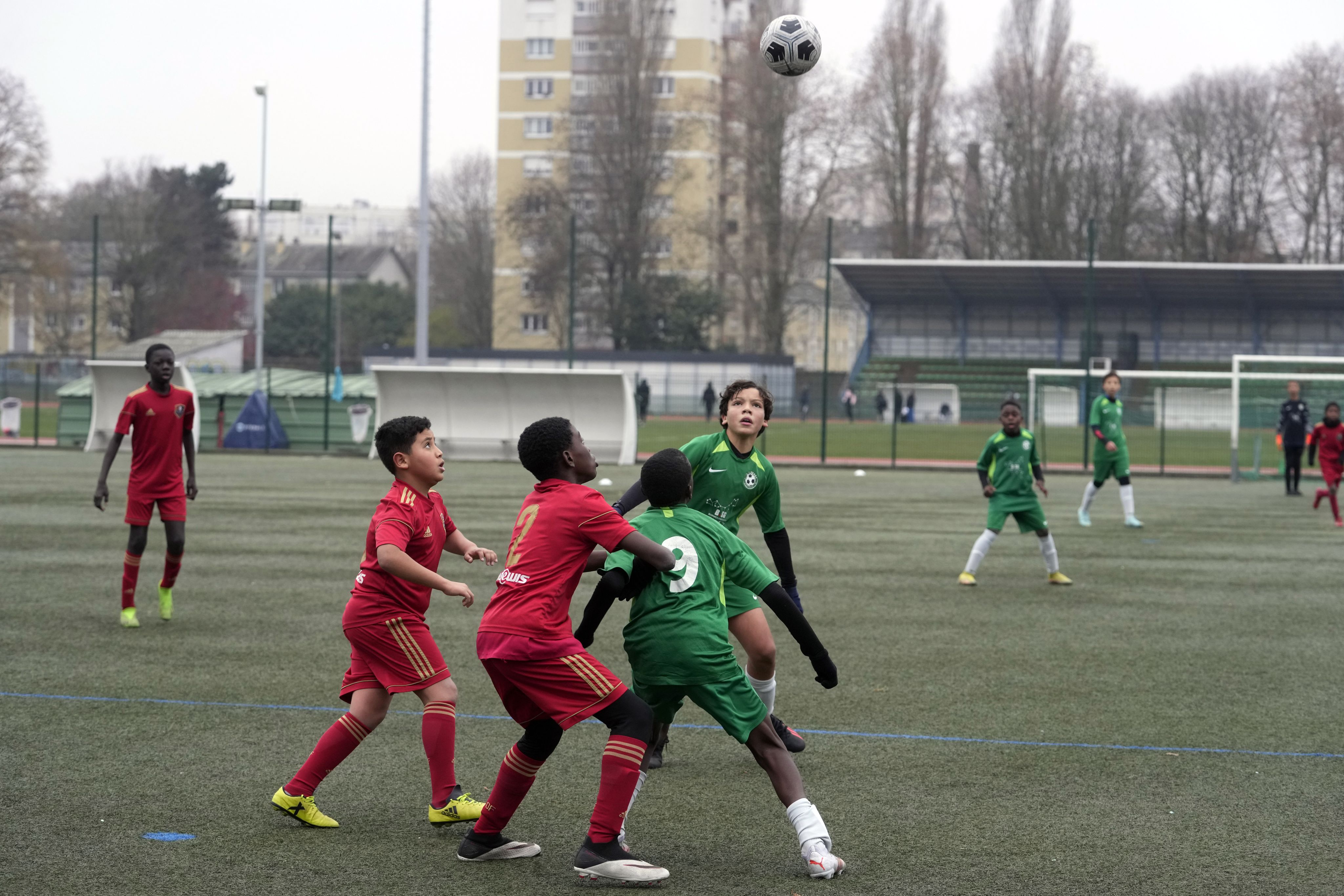
If you want to find a diamond in Paris, Les Champs Elysees would be a good starting point. A football gem, however, is not too far away either.
While the French capital possesses plenty of glitz, glamour and culture, its lesser-known corners have helped produce arguably football’s biggest talent factory, known as les banlieues – the suburbs.
“Everyone knows that the best breeding ground for young talent is here,” Paris Saint-Germain chief scout Pierre Reynaud tells Sky Sports. Scouts are flying in from across Europe to watch youth team football in the city. You can see why.
One World Cup victory, two more major tournament finals – all in the last eight years. It has helped turn France into arguably the most successful international football nation of the past decade, and more success could be on the horizon.
Out of France’s 25-player squad called up to Euro 2024, 13 were either born or have links to the Ile-de-France region where Paris and its suburbs sit. Notable names include Kylian Mbappe and William Saliba, arguably the best players in their positions in world football.
Go further back and Thierry Henry, Patrice Evra, Louis Saha, Nicolas Anelka and Paul Pogba benefitted from the same upbringing. This is not a new phenomenon; this is a serious birthplace of talent.
But it is not just the French national team that has benefited from the Ile-de-France. The region attracts 40 per cent of France’s overall immigrant population – and half of that comes from the African continent. The diversity has led to other countries being given talent courtesy of the Parisian suburbs.
It has meant the Ile-de-France generated more players than any other region at the 2022 World Cup, as well as the 2023 Africa Cup of Nations, won by the Ivory Coast who had six starting players in the final raised on the streets of Paris.

On top of that, 33 players who featured in the 2023/24 Champions League came from the Ile-de-France, nearly twice as many as the next best region: Catalonia, which possesses Barcelona’s La Masia academy.

But what is the secret of these successful streets? What lies within the cracks, the culture and the cages of creativity?
The first place to look is the density of the area. The Ile-de-France region, suburbs included, contains over 12 million people, which is over 20 per cent of the overall population of France, but covers just two per cent of the country’s territory.
And it is a packed environment that adores football. “Every day, you’re with the ball, if you can find one somewhere – a football, leather ball - whatever,” says West Ham goalkeeper Alphonse Areola to Sky Sports.
“In every part of Paris and the suburbs, you can always find a net or a pitch or somewhere to play.”
Street football – often played in cages and known as la five – does not sound like the most glamorous way to find players, but the top clubs look there. “There’s no such thing as official matches,” says PSG chief scout Reynaud.
“Sometimes it can give you a big surprise,” adds PSG deputy youth football director Yohan Cabaye to Sky Sports.
“Of course it’s a different type of scouting and the approach is different. When you look at street football, you look at real technique and creativity.”


Then there are the opportunities. The Ile-de-France area has 1,100 registered football clubs with around 325,000 young players signed up. Some of those clubs are famed for attracting the right talent.
Mbappe and Saliba played together at AS Bondy. Henry and Saha – both from immigrant families who came from Guadeloupe – trained at the infamous Clairefontaine academy after being spotted at Ile-de-France clubs.
Riyad Mahrez, whose family came to the area from Algeria, played for AAS Sarcelles, the fourth biggest club in France, who have also sent players to Serie A, Manchester United and Hoffenheim.
“The level of the Ile-de-France championship for young people is the highest in France. It’s one of the highest in Europe I’d say!” says Sarcelles coach Mohamed Coulibaly to Sky Sports. “We have the best amateur regional teams and are capable to compete with professional clubs from all over the world.
“The secret of the streets of Paris is that everyone wants to assert themselves and everyone wants to impose themselves. It’s like a small jungle!
“At 16, 17, 18 years old, [Mahrez] still had the soul of a nine-year-old child. Even when he was struggling at 14 or 15, and didn’t play much, he always had this fire where he said: ‘I’m going to become a professional’.”
Not all make it though. While the streets contain a haven for football’s young talent, it is not always a safe one. The Ile-de-France region has a poverty weight of 15.5 per cent, while concerning crime levels have caused it to gain an unwanted reputation.
“It’s a town that is a bit tough,” says Saha. “You have to be careful not doing the wrong stuff, or meeting the wrong people.
“I have a few friends more talented than me, and were capable of doing great things, they picked the wrong choices and roads, met the wrong people. Then it’s too late.”
But clubs try to help with those issues. Anthony Martial recalls the help of coaches and “youth educators” who have helped put players on the right path.

And then there is PSG, who do not just have an academy brimming with local talent but a pre-academy for toddlers, getting them into football and education early.
“The preferred ages we start looking at are infants and toddlers,” says Reynaud. “We look at U7, U9, U11, games because these are very important stages in players who reach the top level, especially U11s.
“We like smart, technical players who have a certain level of speed – whether that be running speed, hand-eye coordination or brain speed.
“These players have to see things very quickly in the middle of the field and take in information quickly. We try to see all these little things, but they are not so obvious in toddlers.
“Every single Ligue 1 and Ligue 2 club can be seen on the Paris pitches. But foreign clubs are targeting this young audience too.”
It poses a challenge for PSG, who ditched the ‘Galactico’ project of Lionel Messi, Neymar and Co to favour a team filled with young, French players. The likes of Bradley Barcola and Warren Zaire-Emery - another player from the Ile-de-France streets – are the latest to break through.
PSG owner Nasser Al Khelaifi said the dream is to have 11 Parisian players in the team. Given the talent on the club’s doorstep, you can certainly see why.
Watch Paris: Born to Play including interviews with William Saliba, Anthony Martial, N'Golo Kante and other players born and raised in the Paris suburbs on Sky Sports On Demand right now.




